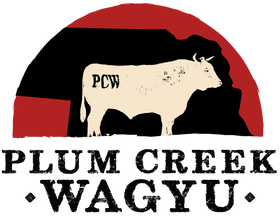Wagyu vs. Kobe Beef: What’s the Difference?
When it comes to premium beef, two names stand out: Wagyu and Kobe. While they’re often used interchangeably, they’re not the same. Understanding the distinctions can help you appreciate the unique qualities of each and make an informed choice for your next indulgent meal.
What is Wagyu?
"Wagyu" translates to "Japanese cow," and it refers to four specific breeds of cattle: Japanese Black, Japanese Brown, Japanese Polled, and Japanese Shorthorn. Wagyu cattle are renowned for their rich marbling, which results in unmatched tenderness, juiciness, and flavor. This luxurious fat distribution is due to meticulous breeding, a high-energy diet, and a stress-free environment.
Wagyu beef is produced worldwide, including in Japan, the United States, and Australia. Each region’s beef varies slightly based on factors like feed, climate, and breeding practices. However, the term "Wagyu" is broad and encompasses a variety of beef products within these breeds.
What is Kobe Beef?
Kobe beef is a specific type of Wagyu beef that comes from the Tajima strain of Japanese Black cattle, raised exclusively in Japan’s Hyōgo Prefecture. The name "Kobe" is protected by strict regulations, and only beef meeting rigorous criteria can bear the Kobe name.
To qualify as Kobe beef:
-
The cattle must be purebred Tajima Wagyu.
-
They must be born, raised, and slaughtered in Hyōgo Prefecture.
-
The beef must meet strict marbling and quality standards, typically achieving an A4 or A5 grade.
-
It must be certified by the Kobe Beef Marketing and Distribution Promotion Association.
This exclusivity makes Kobe beef rarer and more expensive than general Wagyu.
Key Differences
-
Origin: All Kobe beef is Wagyu, but not all Wagyu is Kobe. Wagyu can come from various regions and breeds, while Kobe is strictly tied to Hyōgo Prefecture and the Tajima strain.
-
Grading Standards: Kobe beef adheres to some of the highest grading standards in the world, ensuring exceptional marbling, flavor, and texture. While Wagyu beef is also graded, the standards and quality may vary depending on the producer and region.
-
Availability: Kobe beef is much rarer than Wagyu. In fact, only a limited number of certified Kobe beef cattle are slaughtered annually, making it a delicacy even within Japan.
-
Price: Due to its rarity and stringent requirements, Kobe beef often commands a higher price than other Wagyu varieties.
Similarities
Both Wagyu and Kobe are prized for their:
-
Exceptional marbling, which delivers a buttery texture and rich flavor.
-
Unique fat composition, high in unsaturated fats, which melts at a lower temperature and enhances the taste.
-
Meticulous care in breeding, feeding, and raising the cattle.
How to Choose Between Wagyu and Kobe
When deciding between Wagyu and Kobe, consider your priorities:
-
If you want the pinnacle of exclusivity and tradition, Kobe beef is the ultimate choice.
-
If you’re looking for a luxurious beef experience with more options and variety, Wagyu offers plenty of outstanding cuts and price points.
Conclusion
While Wagyu and Kobe beef share a heritage of excellence, their differences lie in origin, grading, and exclusivity. Both offer a dining experience that’s second to none, making either choice a celebration of culinary luxury. Whether you’re indulging in Wagyu or splurging on Kobe, you’re in for an unforgettable treat.
Related Posts
The Science Behind Wagyu Beef Marbling: Understanding Fat Distribution
Curious about the science behind Wagyu beef marbling? Discover how fat is distributed in Wagyu beef and why it leads to its rich flavor and melt-in-your-mouth tenderness. Learn how genetics, diet, and controlled feeding contribute to the luxurious marbling that makes Wagyu beef a world-renowned delicacy.
Wagyu Beef’s Role in the Fine Dining World: Elevating Restaurant Menus
Wagyu beef is the epitome of luxury dining, offering unparalleled flavor, tenderness, and marbling that elevate any dish. Explore how high-end restaurants use Wagyu in innovative ways, from tartare to sushi, and discover why this exceptional beef is considered the pinnacle of gourmet cuisine.
Cooking Wagyu Beef for Beginners: Common Mistakes to Avoid
New to cooking Wagyu beef? Avoid common mistakes like overcooking, using high heat, or skipping the seasoning to achieve the perfect steak. Learn the best tips for cooking Wagyu to perfection, from the right cooking methods to ideal pairings, in this beginner-friendly guide.
Wagyu Beef vs. Grass-Fed Beef: A Flavor Showdown
Wagyu beef vs. grass-fed beef: which one is right for you? Explore the flavor differences, textures, and health benefits of these two premium types of beef. Learn what makes Wagyu beef stand out in terms of marbling and tenderness, while grass-fed beef offers a leaner, more robust flavor profile
The Legacy of Wagyu: How a Japanese Tradition Became a Global Phenomenon
Discover the rich history and cultural significance of Wagyu beef in Japan, and how it has become a luxury product adored worldwide. From its origins as a humble farming tool to its rise as a global gourmet delicacy, learn why Wagyu remains the gold standard in premium beef.
Wagyu Around the World: How Different Countries Raise and Enjoy This Prized Beef
Explore how Wagyu beef is raised and enjoyed around the world! From Japan’s Kobe to American and Australian Wagyu, discover the unique methods that make this luxurious beef a global favorite.








